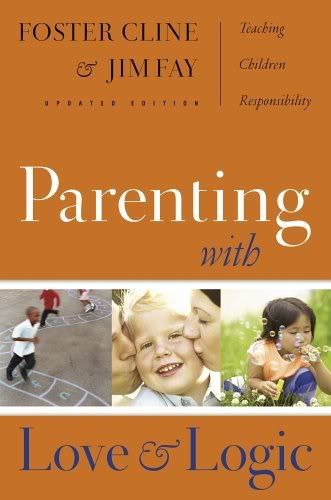
I don’t share many parenting tips here, mostly because I don’t have a lot. I’ll venture into pantry organization or budgeting — but raising up the next generation? Now that’s territory in which I feel rather unqualified to write.
That said — I do have a few tricks up my sleeve. And this one is one I use often, and usually works brilliantly.
Offer pre-filtered choices.
Young children think concretely, and they often see the world in black and white. They’re also vying for control in their life, and are constantly testing the waters of independence.
How often do you hear “I wanna do it!” from your young preschooler? If you’re me, you hear it all day long. And it’s not a bad thing — it’s a sign of healthy confidence when your preschooler wants to put on her own socks, or carry his cereal bowl to the table.
The trick is to know when to give her the independence she wants, and when to reel her free spirit closer to you.
A few years ago I read the book Parenting With Love And Logic

by Foster Cline and Jim Fay, and it really transformed my parenting philosophy. One of the authors’ key points is to allow freedom for the 95 percent of decisions that don’t matter, so that you can fully claim control for the 5 percent that do.
In other words, when the outcome isn’t important, give your child the power to choose. When the outcome is important, make the decision unwaveringly and unapologetically — and hopefully, you’ve made enough independence deposits into your child’s account to keep him from being crushed when his freedom is relinquished.
Because young kids are easily overwhelmed, help narrow down their choices, so that they have finite options for decision-making.
You probably already do this, in some sense. Let me show you what I mean.
Scenario #1
Your daughter, Anne, likes to dress herself in the morning. You’re not going anywhere today, so it doesn’t really matter what she wears. But if you give her free reign, she’ll unload her entire dresser and change six times before breakfast.
- ANNE: I want to pick my clothes!
- MOM: Sure. Here is your pink shirt and your purple shirt. Which one would you like?
- ANNE: The pink shirt!
Anne was given the freedom to wear the pink shirt from a finite amount of options — the pink one or the purple one.
Scenario #2

You can also invent decisions to be made, almost in a silly way:
- DAD: Hey bud, I’m having a ball with you at the park. We need to go soon. Should we leave now, or in ten minutes?
- ETHAN: In ten minutes!
- DAD: Sounds good.
Ethan was given the “power” to choose, but they’re still leaving the park. Staying at the park all day wasn’t one of his options.
Scenario #3
This doesn’t always work — sometimes your daughter takes too long to decide, or she has a whiny attitude even about the choices she’s been given. In this case, you simply make the decision and move on. You be the adult.
- DAD: Lucy, I’d like you to pick the vegetable for dinner tonight. Would you like green beans or broccoli?
- LUCY: But I don’t want vegetables at dinner!
- DAD: We need a vegetable at dinner because they’re good for our bodies, and besides, they’re yummy.
- LUCY: But I don’t want one. (Ten seconds pass)
- DAD: I’ll make the decision. We’re having green beans.
And then the subject is changed to something else, and the decision is made and over with.
Scenario #4
Hopefully, if you’ve given your child enough decision-making power throughout the day for the insignificant choices, you can claim your responsibility as a parent by standing firm with the decisions that do matter.
- MOM: Alright, Peter, it’s 7:30. It’s time to brush your teeth and get ready for bed.
- PETER: But I don’t want to go to bed!
- MOM: I understand. But your bedtime is 8 o’clock, and you were given lots of choices today. Now it’s my turn to make the choice about what we do next.

Peter was probably given the decision about what cereal to eat for breakfast, whether to play with blocks or trucks after lunch, and which book to read before his quiet time. So Mom can more easily claim the power to decide when he needs to hit the sack.
I don’t share this with the experience of 100% success. But this idea has worked well with our incredibly independent four-year-old, and she is almost always a happy, compliant child.
To sum up:
• Let your child “do it” when she asks, if the end result doesn’t matter.
• Allow her to make choices all throughout the day, choosing from a finite amount of selections.
• When your child doesn’t cooperate, make the decision for him and move on.
• You make the decisions that do matter, and claim your position as a parent cheerfully and unwaveringly.

For more on this idea about making independence deposits into your child’s account, along with other parenting ideas, I recommend picking up a copy of Parenting With Love And Logic

.
Do you have any experience with this technique in your relationship with your child?


